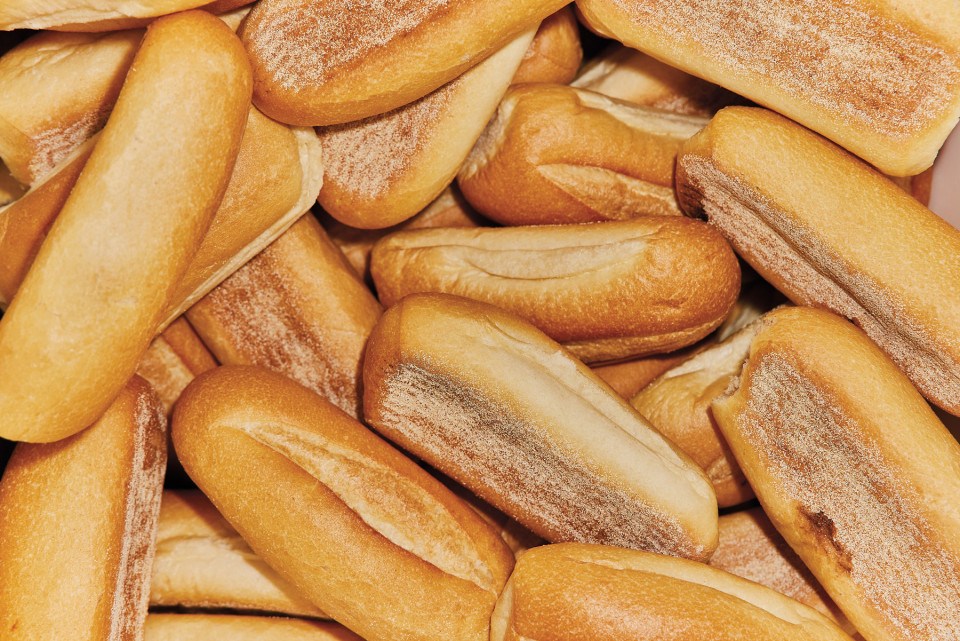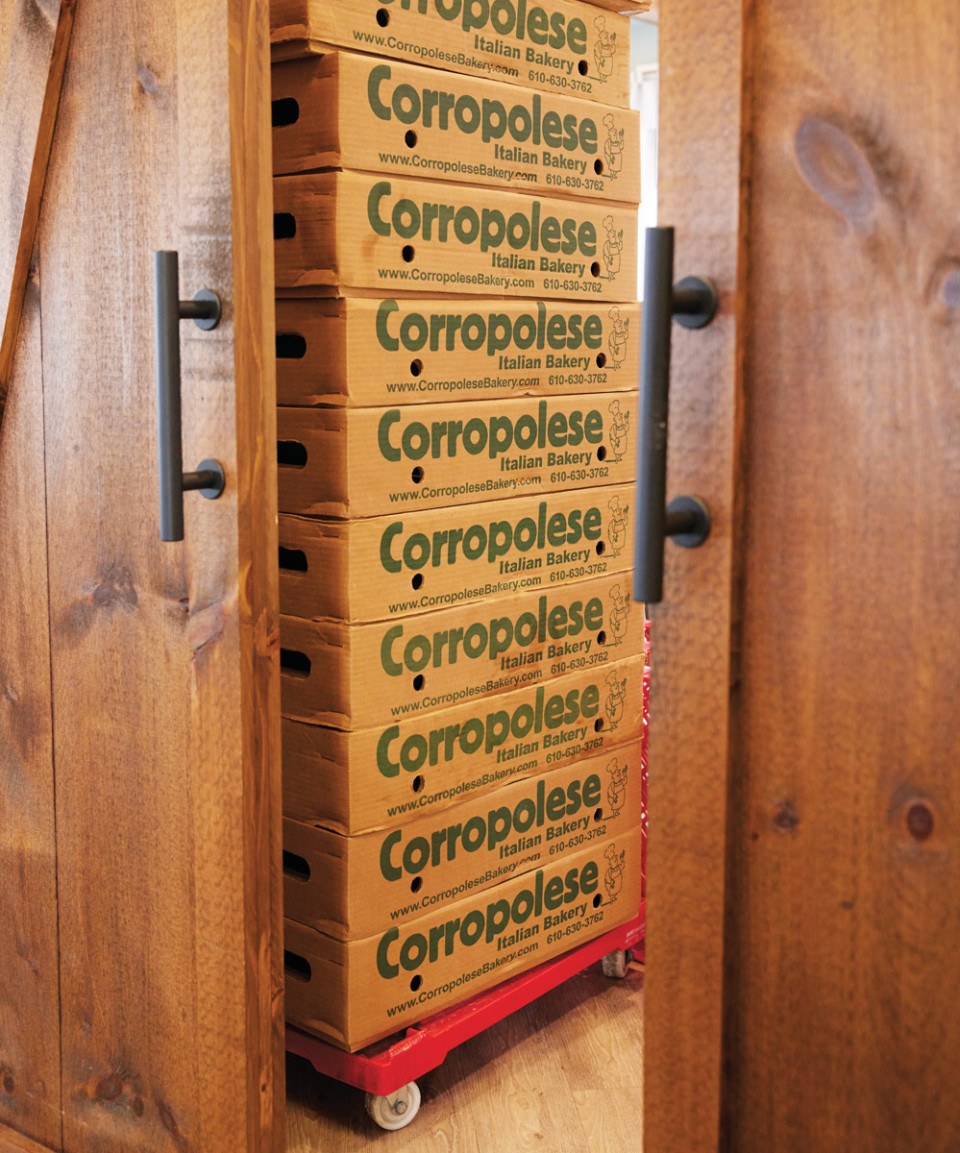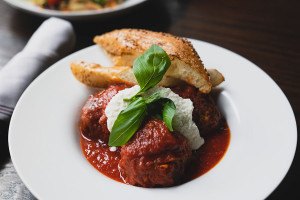Secrets to the Perfect Hoagie Roll
Hoagies are perfect when the bread is perfect. In Philly, that perfection is achieved via a few dedicated families.

Liscio’s hoagie rolls at Ro-Lynn Deli in Brookhaven / Photography by Michael Persico
As I’ve come to understand it, the English language has few redeemable qualities. It’s difficult to learn, and it’s full of stupid rules and punctuation bylaws that are seemingly collecting dust on a shelf somewhere. To those who understand it, though, our language does have an efficient way of revealing the core of what we mean in just a single word. When we call something a martini, the drink demands a triangular glass. Without the signature cocktail glass, it can essentially no longer be called a martini — no matter if it’s the coldest and best cup of gin or vodka and vermouth in the universe.
In Philadelphia English, specifically, the word “hoagie” has a similar logic to it. Unlike, say, a BLT, a hoagie isn’t simply a sandwich defined by its contents; you can have a turkey hoagie or an Italian hoagie or a tuna hoagie. Its common denominator is the bread.
A hoagie isn’t a hoagie without its roll, a skinny white Italian loaf typically measuring nine or 12 or 24 inches long and about three inches wide. A proper hoagie roll depends on an oxymoronic set of qualities working in tandem. Its structure must be sturdy enough to support stacks of meats, cheeses, lettuce, tomato, hot pepper spread, pickles, and any number of other zingy-spicy accoutrements. The inside must remain pillowy — fluffy enough to absorb any runoff from capicola, prosciutto, and oil and vinegar, but not so delicate that the bread becomes soggy.
If you’re a masochist and decide to squish the poor thing in the palms of your hands, a good version will puff back up like a wacky inflatable tube man on the side of the road. All the same, a hoagie roll’s rounded exterior should stay crispy: not quite as crispy as a baguette, not quite so hard that the roll will puncture the roof of your mouth, but flaky enough to produce a tiny mess of breadcrumbs when you bite into it.
Hoagies in Philly are perfect because their rolls are perfect. And thanks to the decades-old baking traditions of a handful of Philly-area families, our city’s hoagie rolls rarely exhibit the same exact kind of perfection.
Aversa Bakery in Washington Township is known for its 20-inch seeded roll, which Ralph Aversa Jr. notably calls a “baguette.” Aversa’s father, Ralph Sr., brought the baguette recipe over from Calabria, Italy, when he emigrated to South Philly in 1961. By the time he opened his New Jersey bakery in the early ’80s, his wife advised him to adjust the dough’s water content to appease Americanized tastes. “Not everyone likes a thick crust, dense bread. So he had to make it lighter — airier in the middle and then crispy on the outside,” Ralph Jr. says. Today, each baguette starts as a four-ounce dough ball made of North Dakota Mill’s high-gluten flour and water from the bakery’s personal well. “No one can replicate our water; that’s why the business will never move,” Ralph Jr. says. “You cannot go to Boca Raton and open up a bakery and get the same bread as we get in the Philadelphia region.”
Down at Cacia’s Bakery in South Philly, the dough for the hoagie rolls is unapologetically dense. “It doesn’t have a lot of water. It’s almost like a bagel dough,” Raymond Cacia says. Barring a few tweaks over time, the recipe for Cacia’s hoagie rolls has stayed the same since Cacia’s grandfather opened the bakery in 1953. Supplying bakeries, delis and restaurants with hoagie rolls has long been part of the business model at Cacia’s. But Raymond says his family’s bakery supplies fewer wholesale clients now than it used to, thanks to steep competition in the area: “A lot of people tend to go with the bread that they could use for, like, three days. Like a spongy, soft, cheaper roll. Ours is more expensive, denser.- It’s only good for one day.”

A tower of Corropolese bread awaits eaters at Penna’s Italian Deli and Market in Lower Gwynedd.
It’s these nuances — the softness, how long a roll keeps, the oven in which the bread is baked — that cause Philly’s deli owners to declare allegiance to specific bakeries, leading to what’s become a bit of a turf battle between the region’s hoagie-roll families.
PJ Hopkins at Liberty Kitchen in Fishtown is firmly in Carangi Baking Company’s camp. Before he and co-owner Matt Budenstein opened their deli four years ago, they set out on a bread odyssey through Philly, South Jersey and New York to find their dream hoagie roll. They wanted something dense enough to hold together Liberty Kitchen’s hoagies, which are often smeared with house-made dressings and relish from Brine Street Picklery (which Hopkins also owns). But the roll still had to be thin enough that every bite included an even ratio of bread, meat, cheese and toppings: “Not like the traditional way where you get cheese, meat, toppings, and at the top, you’ll get one bite where it’s all lettuce. We wanted to avoid that.” Hopkins says Liberty Kitchen will go through 10 or 12 dozen Carangi’s seeded rolls on the weekends, though not every customer seems to understand the choice of bread.
“We’ll get people who are like, ‘Oh, this roll is stale,’” says Hopkins. “We’re like, ‘No it’s not. This is how it’s supposed to be.’”
Further south, at Antonio’s Deli, owner Tony Sawan has remained loyal to Sarcone’s rolls since taking over the shop in 2015. “To me, it’s very important when the roll is not machine-made; it’s handmade,” he says. “There’s no preservatives in it — that also plays a very big factor.” Sawan grew up across from what is now Antonio’s on Federal Street, back when the deli was called Chickies. When Sawan took over operations, he maintained the deli’s long-standing relationship with nearby Sarcone’s because of its rolls’ incomparable old-school flavor, though he has a difficult time explaining the allure: “You can really only describe it as the best … because you’re not really sure what are those ingredients that make it the best. And if you know, it’s going to kind of ruin it.” (Don’t tell Sawan, but the answer is flour, water, yeast, salt, sugar, fat, and the magic of Sarcone’s brick ovens.)
Sawan says the freshness of Sarcone’s rolls also factors into the decision to use them in his deli, which closes every day around 3:30, once he and his team run out of bread. Instead of ordering more hoagie rolls so he could stay open later, Sawan prefers to sell out earlier in the day: “I mean, if my deli would stay open until about seven or eight o’clock, that bread is not really lasting.” Fortunately, the deli’s proximity to Sarcone’s means Sawan can head over to grab extra rolls if he thinks he’s running low for the day. (He says he calls Sarcone’s by 7 p.m. every night to tell the bakery how many loaves he needs for the next day.) But even if Sawan was operating Antonio’s elsewhere, he says, he’d still make his hoagies on Sarcone’s rolls: “If I was in Jersey, I’m driving to Sarcone’s and bringing it back to my deli.”
Dense or light, thick or thin, brick-oven or not, the hoagie roll remains the one essential element in the sandwich that has come to define our region in the past century. When you swap out the capicola, the sharp provolone, the hot pepper spread, and all the other toppings on your go-to hoagie, what’s left is a roll that someone has agonized over. After all these decades, deli owners and bakers are still trying to make your hoagies better — even if we can never agree precisely what “better” means. You’ll just have to keep eating them until you find your own personal version of the perfect one.
>> Click here for more hoagie love.
Published as “Roll Call” in the February 2023 issue of Philadelphia magazine.

